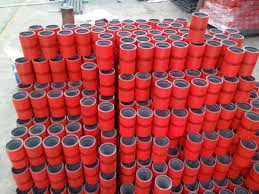- Afrikaans
- Albanian
- Amharic
- Arabic
- Armenian
- Azerbaijani
- Basque
- Belarusian
- Bengali
- Bosnian
- Bulgarian
- Catalan
- Cebuano
- Corsican
- Croatian
- Czech
- Danish
- Dutch
- English
- Esperanto
- Estonian
- Finnish
- French
- Frisian
- Galician
- Georgian
- German
- Greek
- Gujarati
- Haitian Creole
- hausa
- hawaiian
- Hebrew
- Hindi
- Miao
- Hungarian
- Icelandic
- igbo
- Indonesian
- irish
- Italian
- Japanese
- Javanese
- Kannada
- kazakh
- Khmer
- Rwandese
- Korean
- Kurdish
- Kyrgyz
- Lao
- Latin
- Latvian
- Lithuanian
- Luxembourgish
- Macedonian
- Malgashi
- Malay
- Malayalam
- Maltese
- Maori
- Marathi
- Mongolian
- Myanmar
- Nepali
- Norwegian
- Norwegian
- Occitan
- Pashto
- Persian
- Polish
- Portuguese
- Punjabi
- Romanian
- Russian
- Samoan
- Scottish Gaelic
- Serbian
- Sesotho
- Shona
- Sindhi
- Sinhala
- Slovak
- Slovenian
- Somali
- Spanish
- Sundanese
- Swahili
- Swedish
- Tagalog
- Tajik
- Tamil
- Tatar
- Telugu
- Thai
- Turkish
- Turkmen
- Ukrainian
- Urdu
- Uighur
- Uzbek
- Vietnamese
- Welsh
- Bantu
- Yiddish
- Yoruba
- Zulu
bull plug oil and gas
The Role of Bull Plug in the Oil and Gas Industry
In the oil and gas industry, the importance of effective management and maintenance of equipment cannot be overemphasized. One critical component that plays a significant role in pipeline and well integrity is the bull plug. This type of plug is utilized in various applications, primarily for preventing flow in oil and gas pipelines, for pressure testing, and for ensuring the safety and efficiency of operations.
What is a Bull Plug?
A bull plug, often referred to as a blind plug, is a type of fitting used to seal the ends of piping or other equipment. Made from materials like steel or other alloys, these plugs come in various sizes to fit different pipe diameters and are designed to withstand high pressure and temperature variations that are common in the oil and gas sector. The bull plug ensures that no fluid can escape or enter a pipeline, making it an essential tool for both operational efficiency and safety.
Applications of Bull Plugs
1. Pipeline Maintenance One of the primary applications of bull plugs is in the maintenance of pipelines. When a pipeline requires inspection or repair, bull plugs are used to seal off sections of the pipeline, allowing for safe work to be conducted without the risk of leaks or spills. This ensures that maintenance activities can be performed without disrupting the overall operation.
2. Pressure Testing Before pipeline systems are put into operation, they must undergo rigorous pressure testing to ensure their integrity. Bull plugs are used to seal ends of the pipes during this testing process. By doing so, operators can safely apply pressure to the system to identify any potential leaks or weaknesses without the concern of fluid escaping.
3. Safety Measures In scenarios involving pressure build-up, such as during unexpected operational shutdowns or emergencies, bull plugs act as a safety feature to contain fluid within the pipeline. This containment is crucial in preventing environmental incidents or hazardous material exposure that can arise from spills.
bull plug oil and gas

4. Temporary Seal Bull plugs can serve as a temporary sealing solution during construction or modification of pipeline systems. They can be easily installed and removed, making them versatile tools during the ongoing development of oil and gas infrastructure.
Advantages of Using Bull Plugs
The implementation of bull plugs in the oil and gas industry comes with several advantages. Firstly, their robust design allows them to withstand harsh environmental conditions, which is essential in off-shore drilling sites or regions with extreme temperatures. Secondly, the use of bull plugs contributes to more efficient pipeline operations as they reduce the likelihood of leaks, which can have catastrophic safety and environmental implications.
Moreover, bull plugs facilitate proactive maintenance of systems, leading to extended equipment life and reduced operational costs. By ensuring that pipelines can be safely sealed off for inspection and repairs, companies can prevent costly downtime and ensure continuous operation.
Conclusion
In summary, bull plugs are indispensable components within the oil and gas industry, providing essential sealing solutions that enhance safety, efficiency, and reliability. Their role in maintaining pipeline integrity cannot be understated, especially given the high stakes involved in oil and gas operations. As the industry continues to evolve with advancements in technology and increased demands for safety and environmental protection, the importance of reliable components like bull plugs will only grow.
In the future, continuous innovation in materials and designs will ensure that bull plugs remain a critical part of the equipment used to keep oil and gas operations running smoothly and safely. The effectiveness of bull plugs ultimately plays a key role in safeguarding both the industry and the environment from potential risks associated with pipeline operations.
-
Well Casing Extension Couplings – Applications and InstallationNewsJun.06,2025
-
Types of Crossover Subs in Drilling & CompletionNewsJun.06,2025
-
Key Features of High-Quality Tubing Pup JointsNewsJun.06,2025
-
Installation and Maintenance Tips for Steel Couplings for PipeNewsJun.06,2025
-
How to Select the Right Pup Joint for Oil & Gas OperationsNewsJun.06,2025
-
Applications of Stainless Steel Pipe CouplingsNewsJun.06,2025







